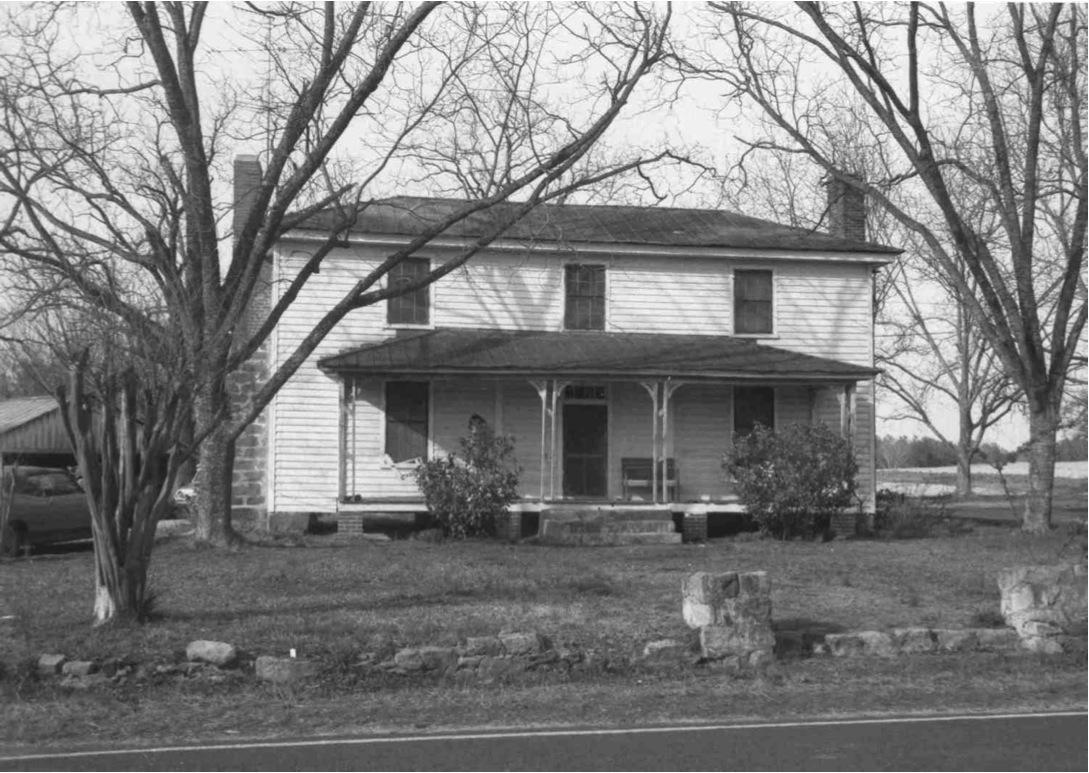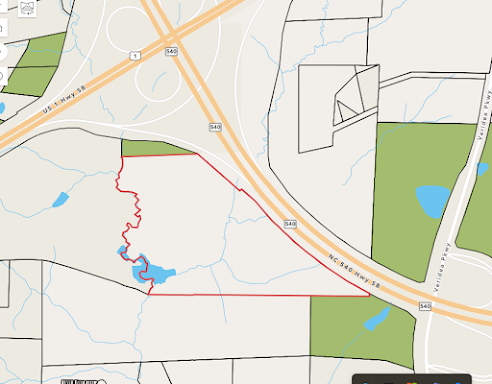Have you ever used the Fendol Bevers Map, created in 1871, for your genealogy research? I use it all the time. So much so, in fact, that I consider Fendol Bevers to be my genealogy BFF from the past. Bevers was the City Engineer of Raleigh. In the early 1870's, He surveyed all the townships of Raleigh in preparation for the 1870 Census.
This blogpost came to be because of a quirky discovery that occurred while using the map the other day. I was trying to remember where Oak Grove township was within Wake County. I had not seen it mentioned in a good long time, but needed to pin that down to solve another puzzle. I looked at progressively older maps and finally found Oak Grove township mapped on the wonderful Fendol Bevers map.
It turns out that sometime prior to 1890, Oak Grove and a portion of Cedar Fork townships of Wake County were carved off in the creation of Durham County. When you need to look up a location referenced in the northwest corner of Wake early on, but your are targeting a time frame after 1850, be sure to look at Durham County. Start with this Durham map.
 |
c.1890s map of Durham County shows the
portions of Oak Grove and Cedar Forks
that were excised from Wake County.
(This is not a Fendol Bevers map, but helps sort
the location of the townships formerly in Wake County.)
|
Once the timey-wimey stuff was sorted, it was back to the Fendol Bevers map and my particular puzzle. As I devoured that little corner of Wake County, trying to place the location of a certain family within proximity to their neighbors from census records, my eyes fell upon an unmistakable name right in the thick of that genealogical "FAN club" - F Bevers! Can it be?
So, yes, I had to go down the rabbit hole and found all this terribly interesting (and some sad) information of about Fendol and his house.
His home, seen below in better days, stood on Leesville Road near the intersection with Doc Nichols Rd. The house no longer survives. It was razed about 2017 to develop the Fendol Farms subdivision at Brier Creek. It is noted in this N&O article about the failure of an 11th hour attempt to save the home, that "certain elements of the home have been removed for preservation and reuse in the community clubhouse as part of the interpretative display honoring Mr. Fendol Bevers and his surveying work in Durham County."
There was such public desperation to save his house that a lengthy description about it appears at a website called freehousenews.com. The plea there reads Fendol-Bevers & $15K–Durham, NC
The description reads:
"You can get this early vernacular, 1280 square feet, I-House with Greek Revival details free and with up to $15,000 in structural moving costs.
The house has a fieldstone foundation, chimneys, and original windows with ornamented surrounds. The interior of the main block appears to be intact and consists of a center hall plan, two rooms wide and one room deep. Some other notable features are original flooring, sheathing, mantels, and double vertical panel doors. With all these architectural details, this may be one of the best preserved farms in Durham County. It is also one of only a few antebellum structures still extant in the area.
The house gets its name from Fendol (Fendel) Bevers (Beavers) who built the house around 1850. He lived from 1822-1883, was Raleigh’s City Engineer and surveyed Wake County using his own surveys for the 1870 U.S. Census. The surveys were part of an effort from 1870-1895 by many North Carolina counties to show the new township borders as a result of the 1868 Constitution. When Durham County separated from Wake County 10 years later, his 1871 survey map helped set the Durham County borders. Interestingly, in 1871 Durham County did not exist, so the Fendol-Bevers farm would have actually been identified, at that time, as being within Wake County. In the nineteenth century, Leesville Road was near the Wake County Line and served as a major route between Raleigh and Hillsborough. In 1895, the house and farm were sold to J. Elmer Ross.
There are a number of late-nineteenth and early-twentieth-century farm buildings surrounding the farmstead, including a kitchen house with a hewn-timber frame and transom lights above the two entrances, a log smoke house, several tobacco barns, and storage sheds. The architecture of the Fendol Bevers building features an elongated form with a low hip roof and end chimneys. A rare feature in Durham County is the ashlar (squared) stone bases. The windows are six-over-nine on the first floor and six-over-six on the second floor and have four-part surrounds decorated with plain corner blocks." >> more
I wish someone could have saved the F Bevers home.
Do not miss a chance to use the Fendol Bevers map in your Wake County research. I promise you will be rewarded. When you do, take a minute to notice how rich in detail the map is. In addition to the townships, the map shows landowners, churches, retail stores, schools, and mills. It must have taken a lot of time for Fendol to create it in that time period with the tools and transportation modes available.
I have spent too many hours to count gazing at his wonderful 1871 Wake County map. I have solved more local genealogy puzzles and mysteries with his map than most any other map or resource I have used to date. Architectural and Historic Surveys run a close second, but Fendol is the Man!
When you solve your mystery, send up a thousand thanks to my good friend Fendol Bevers, surveyor, City Engineer of Raleigh and time traveling BFF of Wake County researchers. Let's appreciate all his efforts to keep Wake's past alive for future generations.
View a previous post about the Fendol Bevers map here.
Visit Wake County Genealogical Society's Website - Homepage | WCGS Events | Join WCGS | Publications | Wake Cemetery Survey Images |Digital Resources | History Resources | More Links and Resources | Contact - info(at)wakecogen(dot)org






















